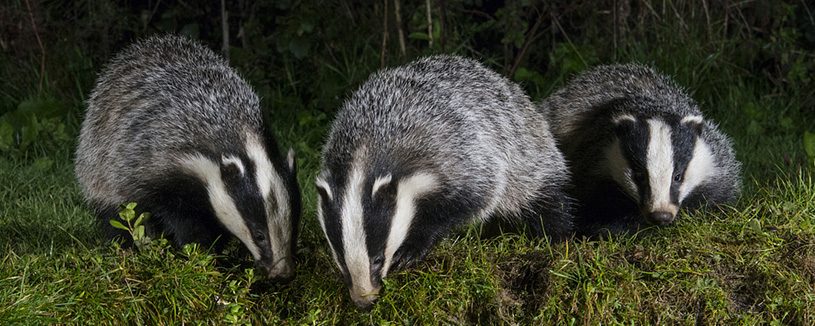
As Northern Ireland’s Department of Agriculture, Environment and Rural Affairs (DAERA) considers the fallout from the recent court judgement quashing their plan to shoot badgers in Northern Ireland, what does the future now hold for their bovine TB strategy?
DAERA’s current policy carried forward the main elements of the strategy proposed in 2016 by the government-appointed TB Strategy Partnership Group (TBSPG). The TBSPG was a government-industry partnership which included senior industry figures and former civil servants. Notably, no member of the group had any expertise or background in badgers or wildlife.
Soon after its appointment, the TBSPG met with stakeholders to ‘seek their views’. Even at that early stage, the TBSPG made it clear that they thought a badger cull was necessary. There was a clear impression that they had already decided on a badger cull before any evidence-gathering or engagement, meaningful or otherwise, had taken place.
The TBSPG was succeeded in 2018 by another industry-led group, the TB Eradication Partnership (TBEP), under the same TBSPG Chairman. Similarly, the TBEP exhibited equal enthusiasm for a badger cull, with apparent little regard for the views of the badger/wildlife side. You can read about the TBEP membership in this Protect the Wild blog.
Following the recent successful Judicial Review taken by Wild Justice and the Northern Ireland Badger Group, any further attempt by DAERA to progress a badger intervention will require a new public consultation. Given the shambolic nature of the last consultation, any new proposal will require root and branch revision to have any chance of succeeding.
Meanwhile, two major pieces of significant and highly relevant new research have emerged.
Firstly, a comprehensive analysis of bovine TB data by Langton et al. failed to identify a meaningful effect of badger culling on bovine TB in English cattle herds. Instead, reductions in cattle TB incidence and prevalence showed a strong correlation with the introduction of cattle-based disease control measures.
Secondly, a study carried out by scientists at the Northern Ireland Agri-Food and Biosciences Institute (AFBI) found that cattle-to-cattle transmission was by far the most common form of disease spread. Cattle-to-badger transmission was considerably more common than badger-to-cattle transmission, and no badger-to-badger transmission was detected.
The science makes it increasingly clear that ineffective herd testing and the two million cattle movements annually are driving the persistence and spread of bovine TB in Northern Ireland, not badgers. As the body of evidence exonerating badgers builds, DAERA will surely struggle to justify any new badger removal proposal.
As it turned out, DAERA’s (now defeated) decision to implement an indiscriminate and cruellest possible badger cull was a spectacular own goal and a decisive setback to their bovine TB strategy. The responsibility for this debacle lies squarely with the architects of the strategy and those in the industry who supported and enabled it.
Perhaps predictably, the decision to inflict unacceptable suffering on large numbers of healthy badgers served to galvanise the conservation and animal protection sectors in opposition to the plan.
For its part, the badger side has seen its good faith and willingness to engage thrown back in its face. Confidence and trust in the process have been seriously undermined. The government has squandered yet another opportunity to make meaningful progress.
This is a watershed moment for DAERA and the industry. They can choose to embrace the science and tackle the reservoir of undetected infection in cattle, or they can continue to scapegoat badgers and face further legal challenges and delays.
Discover more from The Badger Crowd - standing up for badgers
Subscribe to get the latest posts sent to your email.

